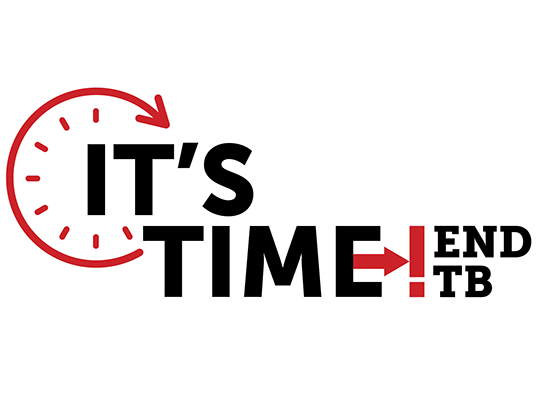It’s Time to End TB

People around the world observed World Tuberculosis (TB) Day on March 24. World TB Day is an opportunity to share successes in TB prevention and control and raise awareness of the challenges that hinder our progress toward the elimination of this devastating disease. This year’s World TB Day theme, “It’s Time to End TB,” served as a call to action for public health professionals, clinicians, and communities working together to fight the world’s number one infectious disease killer.
TB is a serious health threat, especially for people living with HIV globally. People living with HIV are more likely than others to become sick with TB disease once infected. Untreated latent TB infection, in which TB bacteria are present in the body but controlled by the immune system, can quickly progress to TB disease in people living with HIV since the immune system is already weakened. Without treatment for latent TB infection, people can develop TB disease. If not treated properly, TB disease can be fatal.
According to new preliminary data from the U.S. Centers for Disease Control and Prevention (CDC) National TB Surveillance System, 9,029 new cases of TB were reported in the United States in 2018. This is the lowest case count on record. The percentage of TB patients in the United States with known HIV status who were also infected with HIV was 5.3% for all ages and 8.6% among persons aged 25-44 years. This is a decline of 3.4% from 2017 for all ages. Worldwide, TB continues to be the leading cause of death among persons living with HIV infection.
People living with HIV infection who also have either latent TB infection or TB disease can be effectively treated. CDC recommends HIV screening [PDF, 446KB] for all TB patients, including people with TB disease and people with latent TB infection. In 2017, 88.9% of patients with TB disease reported to CDC had been tested for HIV. Routine HIV testing is also recommended for people who may have TB disease, people who have been diagnosed with latent TB infection, and contacts to TB patients. If found to have a positive test for TB, further evaluation is needed to rule out TB disease. The next step is to start treatment for latent TB infection or TB disease based on the evaluation findings. Fortunately, there are a number of treatment options for people living with HIV who also have either latent TB infection or TB disease.
CDC has guidelines, education materials, and other resources for patients and healthcare providers on TB and HIV coinfection. It’s time to strengthen our efforts to test and treat latent TB infection, especially among people living with HIV. It’s time to end TB.